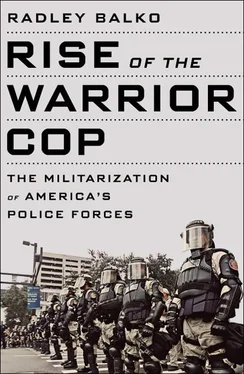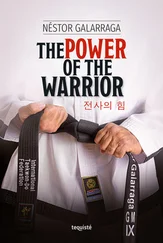Second, some of this book is the product of historical research, some of it is original reporting done exclusively for the book, and some of it is original reporting I’ve done for other publications. Many of the passages taken from reported pieces I’ve already published are reprinted here verbatim, or nearly verbatim.
Finally, many of the anecdotes mentioned in the book happened years or decades ago. Sometimes there was a flurry of initial coverage of an incident, but then no coverage of the resolution. I’ve tried to find out how all of these incidents were resolved, but that wasn’t always possible. For example, an anecdote may have come from a complaint in a lawsuit against a police department that was resolved with a closed settlement, which means the police account of the incident was never revealed. Or a police department may have refused to disclose information about an internal investigation, leaving only press accounts of an incident. In cases like these, I’ve indicated the source of the accusations to let you know that they’re one-sided narratives.
This story of police militarization in America begins with lessons from ancient Rome, then moves quickly through the Dark and Middle Ages into the origins of modern policing. We examine the foundations of the American experiment laid down during the colonial period and the American Revolution—the right to privacy, the Castle Doctrine, and the demilitarization of free societies—then look at the emergence of the modern, centralized police department in the early nineteenth century. After quickly passing through the Progressive Era, the professionalization movement, and alcohol prohibition, we come to the real beginning of the story of modern police militarization: the social upheaval, civil unrest, and culture wars of the 1960s. At that point the book becomes a more focused narrative. We follow the militarization trend through Nixon’s rhetorical wars on crime and drugs in the 1970s, Reagan’s all-too-literal drug war of the 1980s, and the massive expansion of SWAT teams, the proliferation of military gear, and the federalization of policing in the 1990s. The final chronological chapter looks at how the war on terrorism has accelerated the militarization of the police, how SWAT teams and the paramilitary approach to policing have moved beyond the wars on drugs and terror, and how frighteningly willing the government has become to use this sort of force to make a political statement. The book ends with a chapter on reforms and recommendations on how to roll back the militarization of policing in America; and whether any meaningful reform is still possible.
CHAPTER 1

FROM ROME TO WRITS
Quis custodiet ipsos custodes? (Who will watch the watchers?)
—JUVENAL, FIRST-CENTURY ROMAN POET
Given that most of the American Founders were students of the Enlightenment and its revival of classical learning, most of them looked fondly on the Roman republic and drew lessons from the rise and fall of the Roman empire. Alexander Hamilton, James Madison, and John Jay, for example, wrote the Federalist Papers under the pen name “Publius” in honor of the first consul of the Roman republic, and one of the revolutionaries who overthrew the monarchy. John Adams in particular was a fan of Cicero, who spent much of his public life warning of the dangers of militarism and dictatorship—and was eventually murdered for it. The American forefathers were keenly aware of the price that Rome paid by permitting the military to gain such power in their society, and they generally sought to avoid its mistakes.
It seems fitting then that the world’s first documented, organized police force would have been established in ancient Rome. And the rise of that ancient police force raised many of the same questions about balancing security with liberty that we debate today.
After Julius Caesar was assassinated in 44 BC, Rome fell into chaos as the empire’s powerful factions maneuvered to seize power. Anticipating bloodshed, faction leaders began to pull elite troops from their armies to serve as bodyguards. These guard units came to be called praetorian cohorts, after the praetoria cohors who guarded the tents of Roman generals during war. By the end of the reign of Emperor Augustus, and for the next several centuries, the Praetorian Guard would take on more of the roles we now associate with a conventional police force, including investigating serious crimes, making arrests, providing security during Coliseum games, collecting taxes, spying on suspected revolutionaries, collecting undercover intelligence, and even fighting fires.
During his reign, Augustus established two other policing forces less prestigious than the Praetorians. Around 13 BC he created the cohortes urbanae , or urban cohorts, which he charged with quelling riots and keeping order in the streets. And in AD 6 he created an additional order called the vigiles . First charged exclusively with fighting fires, the vigiles would also later take on police duties and came to serve as Rome’s night watchmen.
Augustus’s Praetorian Guard would eventually become one of the most powerful institutions in Rome. In later years the Guard’s loyalty often determined who would become the next emperor, and its members may have assassinated as many as a dozen Roman emperors and many more potential heirs.
The interesting thing about Augustus’s first police forces is that to implement them he had to navigate some of the same challenges and objections to civic policing that arise today. He had to balance public safety and the maintenance of order by at least appearing to respect civil liberties. More importantly, he had to find ways to assure the Senate and the citizenry that the responsibilities of these bands of order-keeping public servants, all drawn from the Roman army, were distinct from the duties that Romans normally associated with soldiers.
Even in ancient Rome, the public was acutely sensitive to the threat of militarized policing. Prior to Caesar’s march on Rome in 49 BC, soldiers were forbidden to enter the capital as soldiers. There had never been a permanent standing army within the city. It was Caesar’s crossing of the Rubicon, the city’s outer boundary, with his army that triggered the civil war that ended the republic.
After Augustus, the Praetorian Guard became an increasingly powerful force in the upper echelons of Roman power. As conquest and empire became central tenets of Roman society, the day-to-day lives of Romans became infused with militarism. Soldiers and generals began to be held in higher esteem than scholars and statesmen. The Praetorian Guard outgrew its consignment under Augustus to civilian policing and was reconnected with the Roman army. Eventually, the Guard directly interfered with the succession of emperors, sowing further instability. The Praetorian Guard was finally disbanded by Emperor Constantine in AD 312. Its members had made the mistake of backing his opponent. About 1,800 years would pass before the world would see another metropolitan police force as centralized and organized as those that Augustus first established in Rome.
There are also some broader parallels between Rome and the establishment of policing in the modern world. During the Roman republic, disputes were settled between and within families. Criminals were often punished by their own relatives, who faced social pressure to make right by victims and their kin. But under Augustus the state began to take on a much larger role in these traditionally private and provincial affairs. As Rome was transformed from republic to empire, dispute resolution, punishment, and remuneration, which had once been handled privately, fell exclusively to the emperor’s executive power. As we will see, Britain and the early United States went through a similar transition centuries later. In the United States, the colonial-era concerns about standing armies gave way to more immediate problems like crime and rioting as the country moved into the industrial age. Cities turned to centralized power—police agencies reporting to the mayor—to impose law and order. 1
Читать дальше













